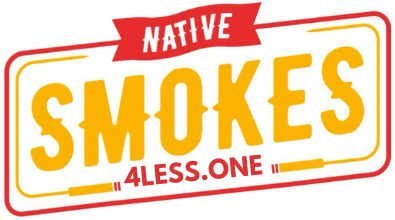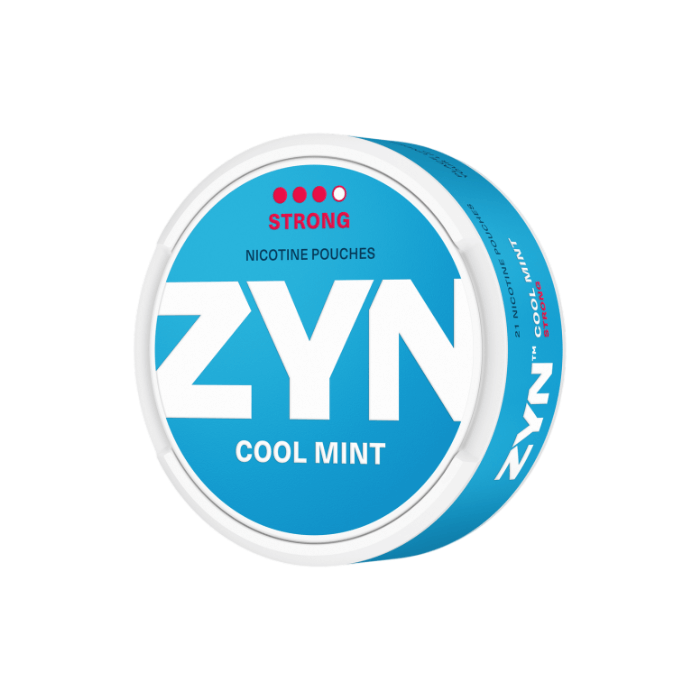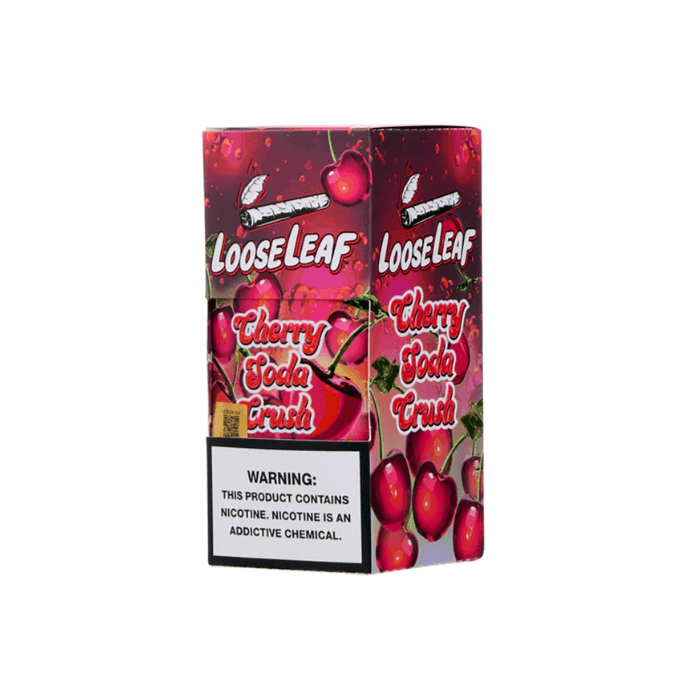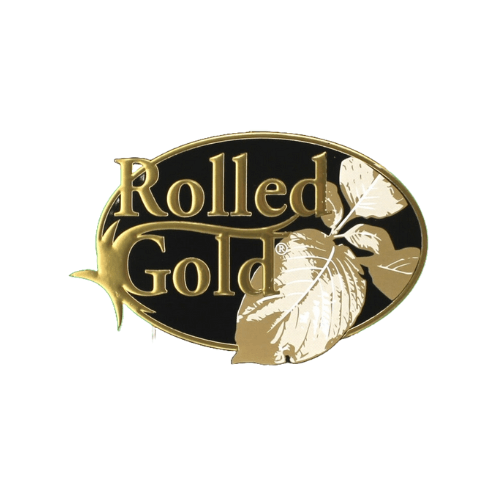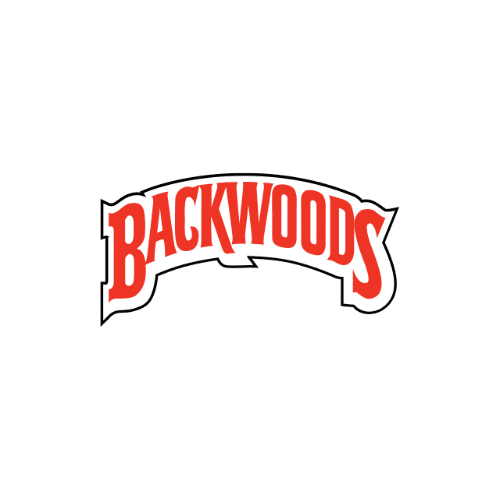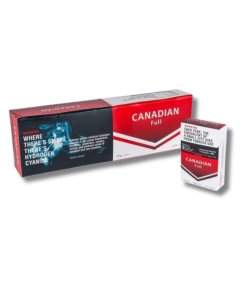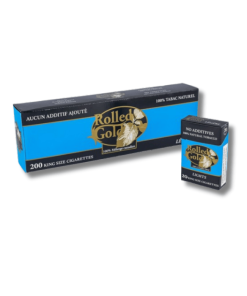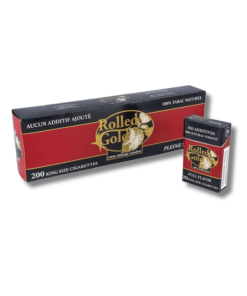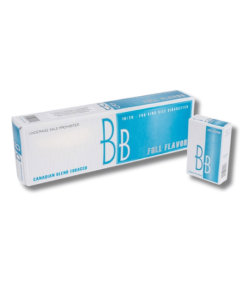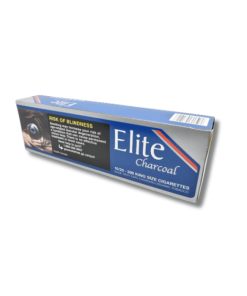Cigarettes, Guides
A History of Cigarette Ads
and why it still fascinates people today. Whether you’re a casual puff-er, a collector of vintage ads, or someone who just loves to understand culture through its visuals, this little timeline will definitely spark your interest. From retro glamour to jaw-dropping health claims, cigarette ads have had a moment in history
Vintage Cigarette Ads
There’s something about vintage cigarette ads that just hits different. They weren’t just selling tobacco—they were selling a lifestyle. Think smooth fonts, moody lighting, and sharply dressed models, all framed like they just stepped out of a mid-century film set.
- Cultural Reflection: These ads didn’t just market a product. They mirrored the era—post-war optimism, rising consumerism, and gender roles in flux. It was all about looking successful, suave, or stylish.
- Star Power: Hollywood celebrities and athletes were frequently featured. Their faces lent credibility and glam to the brands. And let’s be real, if your fave actor smoked it? You probably thought about trying it.
- Design Focus: Brands used soft pastels, minimalist slogans, and timeless aesthetics. It made the whole thing feel elegant and low-key seductive—especially to younger audiences at the time.
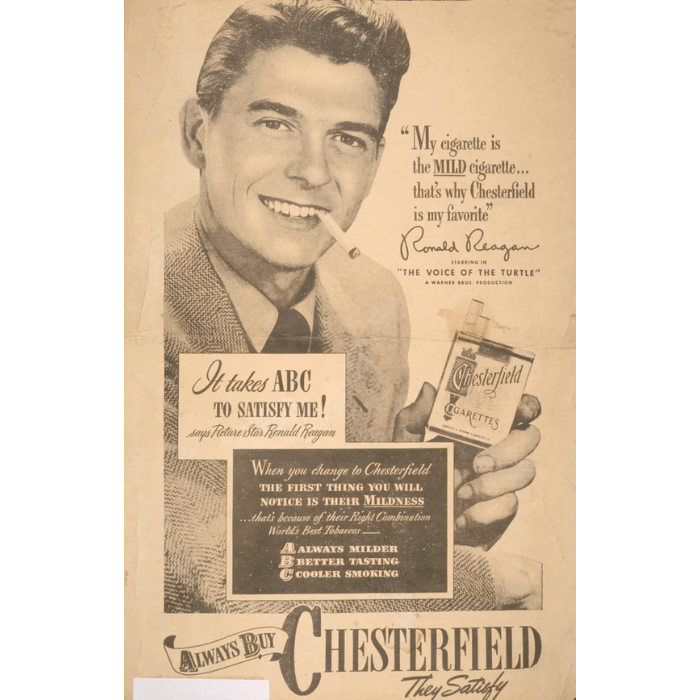
Cigarette Ads 1950s: The Advent of TV Commercials
The ’50s was when things really shifted. Cigarette companies moved from glossy magazine spreads to the flickering magic of television. That meant bigger audiences and bolder tactics.
- Commercial Break Takeover: Cigarette ads were airing during prime time TV. You’d see upbeat jingles, smiling doctors, and couples lighting up like it was part of their nightly routine.
- “Doctor Recommended”: Yeah, they really leaned into that angle. Some brands had actual actors in lab coats suggesting certain cigarettes were gentler on your throat.
- Impact on the Youth: A lot of these commercials were colorful, catchy, and upbeat—pulling in younger viewers who probably hadn’t even lit a cigarette yet.
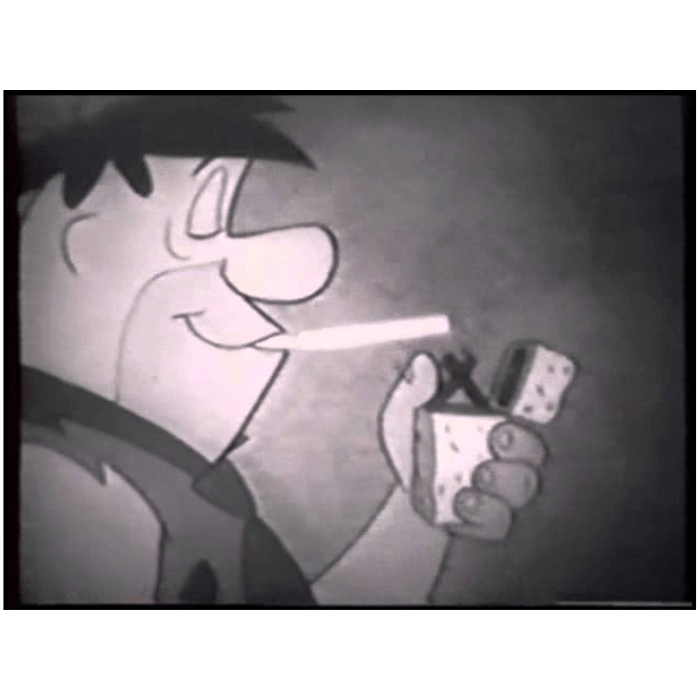
Shocking Old Cigarette Ads
Some vintage cigarette adverts from the past weren’t just bold, they were actually shocking. Like, when you see them now, they feel less like ads and more like a bizarre cultural mirror. They reveal just how deep the influence of advertisers ran in shaping society’s view of smoking—even when it was clearly harmful.
- Physicians as Spokespeople: Imagine flipping through a magazine and seeing physicians—actual doctors—encouraging people to smoke. These weren’t minor cameos. They were full-on, smiling portraits with lines like “Recommended by more doctors.” It gave consumers a false sense of security, making cigarettes feel almost healthy.
- Involvement of Kids and Holidays: Some ads featured babies or Santa Claus puffing away, indirectly pushing the message that smoking was wholesome and festive. It blurred lines, making the dangers of tobacco use seem far away or even non-existent.
- Link to Drugs and Services: Back then, there was minimal distinction between smoking and other normalized habits. Cigarettes were advertised the same way as common drugs or wellness services. The line between medical advice and sales pitch was super thin—and completely unregulated.
- Pre-Internet Influence: Keep in mind—this all happened before the internet, before information was at your fingertips. So if you saw a clean-cut doctor in a white coat promoting a smoke, you trusted it. There were few opposing voices and no easy way to verify health claims.
- Impact on Society: These ads played a massive role in how society viewed tobacco. They shaped public opinion, lulled people into thinking the risks weren’t real, and made smoking seem like a personal choice rather than a public health issue. And the kicker? Most of it was legal.
Today, we have way more awareness, but these adverts are an intense reminder of how the culture around smoking was built—and how much trust was misplaced in physicians and advertisers who should’ve known better.
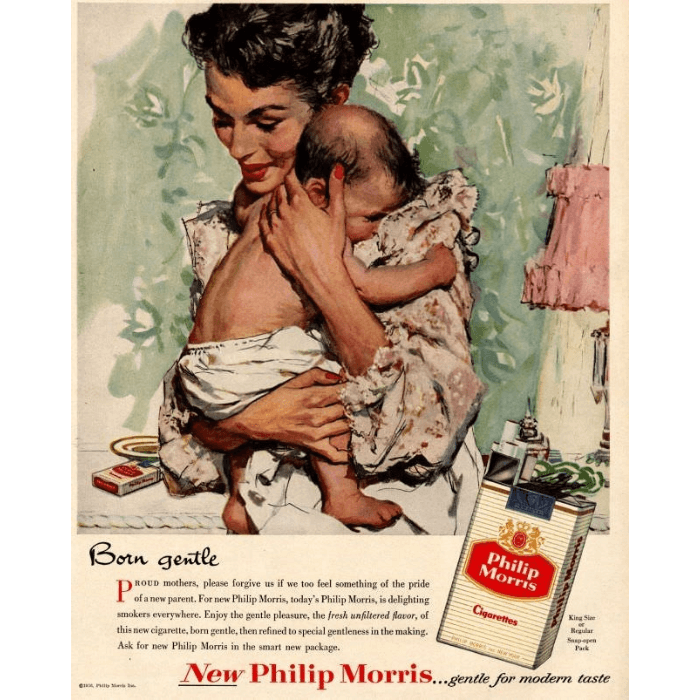
Old Cigarette Ads Health Benefits Claims
Let’s get into it—the part of cigarette ad history that really makes you do a double take. For a solid chunk of the 20th century, advertisements weren’t warning about health risks… they were doing the opposite. These vintage campaigns tried to convince every smoker out there that smoking was basically good for you. I know—it’s giving denial.
- The “Throat Doctor Holding a Cigarette” Era: Sounds dramatic, but it was real. Ads often featured a throat doctor holding a cigarette with a calm, clinical expression—like he was endorsing cold medicine, not smoking. The idea was to suggest that these brands were easier on your lungs and gentler for daily consumption.
- Phillip Morris & Lucky Strike Messaging: Brands like Philip Morris (sometimes spelled Phillip Morris) ran full-page spreads claiming their cigarettes were the “least irritating.” Meanwhile, Lucky Strike leaned hard into the “It’s Toasted” tagline, pushing the narrative that their chewing tobacco was smoother and safer—especially compared to cigars or other products.
- Health Claims & Weight Control: These advertisements weren’t just about physical health. They also sold the idea that smoking could help with staying slim—specifically aimed at women who were told a cigarette was better than dessert. It blurred the line between wellness and image.
- Before the Surgeon General Ban: All of this happened before the Surgeon General issued formal warnings or restrictions. Back then, there was no ban on campaigns like these. Cigarette companies used whatever angle they could to keep consumption growing, even if it meant seriously bending the truth.
Today, we know better. But these old ads give us a perfect example of how far tobacco brands would go to frame smoking as harmless—especially before the science and public health advocacy caught up. It’s a big reminder of why regulation exists and how advertising still impacts smoker habits, even now.
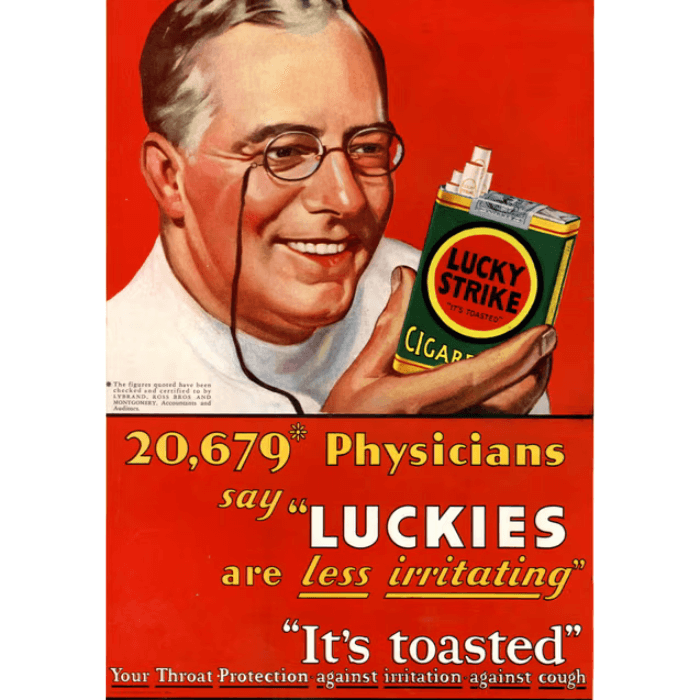
Doctor Cigarette Ads: Cigarettes Sponsored by Medicine
Let’s talk about one of the most surreal chapters in tobacco advertising history—when smoking cigarettes was actually endorsed by medical professionals. I know it sounds wild, but back in the early-to-mid 20th century, cigarette companies weren’t just running magazine spreads—they were putting doctors front and centre. Like, lab coat, stethoscope, and all.
- The “Doctors Smoke Camels” Era: If you’ve ever heard the line “More doctors smoke Camels than any other cigarette”, that wasn’t a meme—it was a real marketing strategy. Brands leaned into the authority of medicine to calm public concerns about throat irritation or lung health.
- How They Pulled It Off: According to archives from the Stanford School of Medicine and other academic sources, tobacco companies sponsored surveys targeting doctors, asking which brands they preferred. Of course, the results were heavily influenced by free samples, paid endorsements, and selective reporting.
- Blurred Lines Between Health and Harm: These ads directly clashed with what medical research would later uncover about lung cancer and other diseases. But at the time, there was little regulation on tobacco marketing. Tobacco companies used the trust people had in the medical field to make cigarette smoking seem… almost therapeutic.
It’s honestly kind of eerie to look back, knowing what we know now—especially with agencies like the World Health Organization linking tobacco products to major public health issues today. But hey, it’s history—and one that really shows how far the tobacco industry went to protect its image.
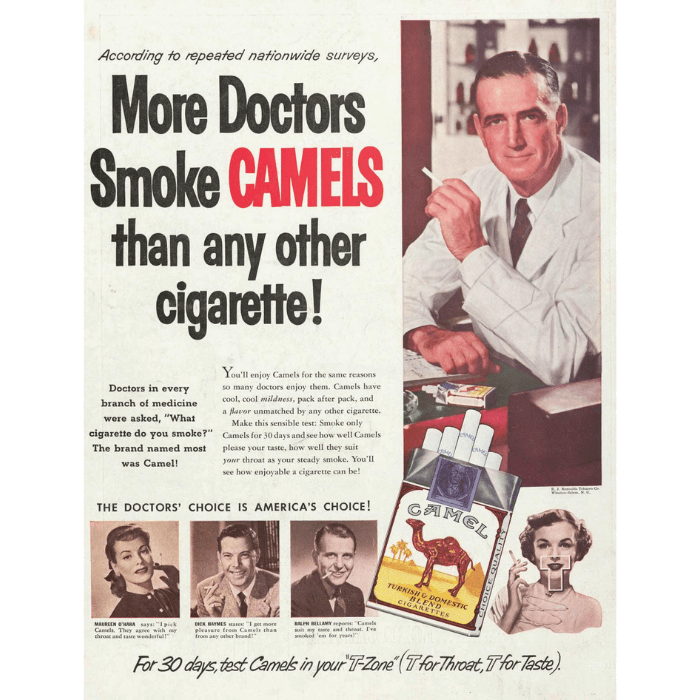
Current Cigarette Ads
Fast forward to now, and the vibe around cigarette advertising has completely flipped. If the ‘50s were all about glam and doctors in white coats, today’s reality is more like… stark warning labels and restricted marketing laws. But that doesn’t mean the conversation’s disappeared.
- Strict Regulations: In Canada, there are heavy limitations on tobacco advertising. You won’t see glossy posters or TV commercials anymore. Instead, cigarette packaging is standardized—muted colours, bold health warnings, and no brand personality.
- Focus on Health Risks: Thanks to decades of medical research and the work of global health advocates (shout out to the World Health Organization), we now know just how serious the health risks of cigarette smoking are. Everything from lung cancer to heart disease has been linked to long-term use.
- Digital Marketing—But Not for Everyone: While vapes and other cigarette alternatives are starting to experiment with social media, most tobacco products still can’t be legally advertised in traditional ways. Tobacco companies have had to pivot and follow regulations from national bodies like Health Canada and even international groups like the National Association for Tobacco Control.
And get this—Stanford Research has even documented how today’s more subtle forms of tobacco marketing still exist, just way more under the radar. It’s less about direct product pushing and more about lifestyle association… though even such advertising is now being carefully monitored.So yeah, things have changed—but the influence of the tobacco industry still lingers. Whether you’re aware of it or not, the way we start smoking, think about brands, or even avoid them is shaped by decades of layered messaging.
Frequently Asked Questions
When did cigarette ads stop?
In Canada, broadcast restrictions began to tighten around the 1970s, and by the late ’80s and ’90s, most traditional forms of cigarette advertising were banned.
Are cigarette ads illegal in Canada?
Yes, they’re pretty much banned across the board. Under Canada’s Tobacco and Vaping Products Act, all forms of tobacco advertising, including on TV, radio, print, and online, are either prohibited or extremely limited.
Are there cigarette ads anymore?
You won’t see them in the way they used to be. Instead of stylish magazine spreads or catchy jingles, modern cigarette packaging in Canada comes with stark warnings and standardized designs.
When was the last cigarette ad?
in Canada, the last traditional cigarette ads disappeared from major media by the early 2000s. The last televised cigarette advert in the U.S. aired in 1971. After that, tobacco companies had to get creative.
Were there ever cigarette ads on TV?
From the 1950s through to the early ’70s, you’d see full-blown TV ads featuring doctors, celebrities, and even cartoon characters promoting cigarettes.
Summary
Looking back, cigarette ads tell us so much about culture, marketing, and the lengths companies will go to make a sale. The transition from chic print to flashy TV commercials, from health claims to outright manipulation—it’s all part of this fascinating history. And while those old-school tactics would never fly today, they left a legacy we still feel in branding and advertising styles.If you’re into Canadian cigarettes; modern, fresh, and affordable—NativeSmokes4Less is literally where you should be shopping. Like, why waste your time or money anywhere else? They’ve got the good stuff, solid prices, and fast delivery across Canada. Whether you’re reupping your supply or trying something new, this is your go-to.Because let’s be honest, nicotine has evolved. But your source? That should always stay reliable.
